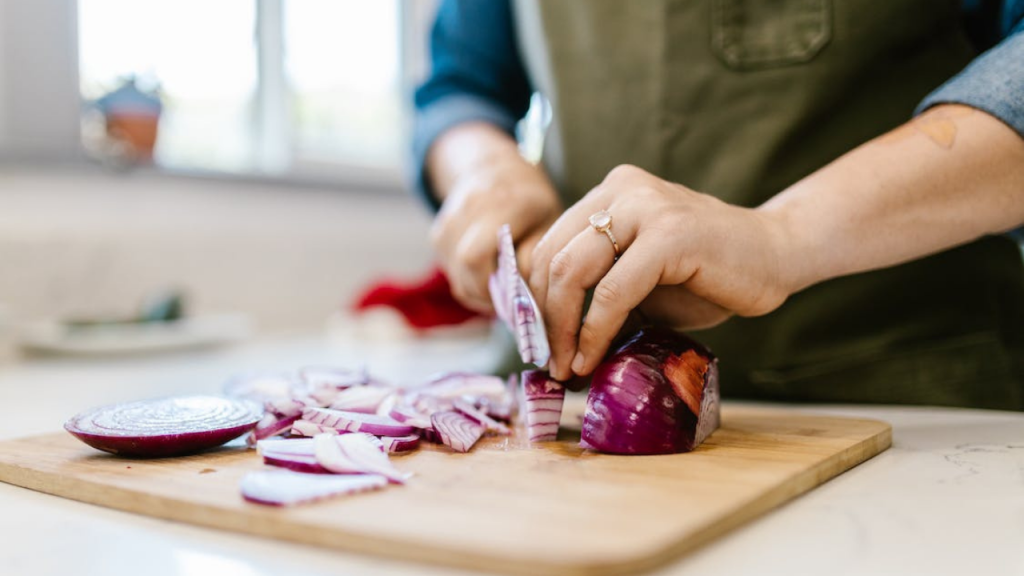There’s nothing quite as bittersweet as the process of chopping an onion. On one hand, you’re preparing a flavourful addition to your dishes, but on the other, those pesky onion-induced tears can turn the culinary experience into a tearful ordeal. Fortunately, there are techniques and tricks you can employ to avoid shedding tears while chopping onions. In this guide, we’ll explore various methods that can help you become a tear-free onion-chopping pro.
1. Chill the Onion
Place the onion in the refrigerator for about 15 to 30 minutes before chopping. The cold temperature slows down the release of the volatile compounds, reducing their concentration in the air and thus minimising their effect on your eyes.
2. Cut Underwater
Submerging the onion under water while chopping can be surprisingly effective. The water absorbs the released compounds, preventing them from reaching your eyes. A downside to this method is that it can make the onion slippery and slightly more challenging to cut, so be cautious while using this technique.
3. Wear Onion Goggles or Glasses
Specialised onion goggles or even regular glasses can create a physical barrier between your eyes and the onion’s fumes. This can help prevent the compounds from reaching your eyes, sparing you the tears.
4. Sharpen Your Knife
A sharp knife creates cleaner cuts and reduces cell damage within the onion. This leads to fewer volatile compounds being released into the air, as compared to using a dull knife that crushes and ruptures cells, releasing more irritants.
5. Proper Technique
Using the right chopping technique can also minimise the release of irritants. Cut the onion with a smooth, slicing motion rather than a crushing one. This minimises cell damage and reduces the amount of irritants released.
6. Embrace Red Onions
Interestingly, red onions tend to release fewer irritants than white or yellow onions. So, if you find yourself frequently chopping onions and want to reduce tears, consider using red onions when possible.
ALSO SEE: A guide to making a lump-free white sauce
Originally written and published by Unathi Balele for Bona
Feature image: Pexels

